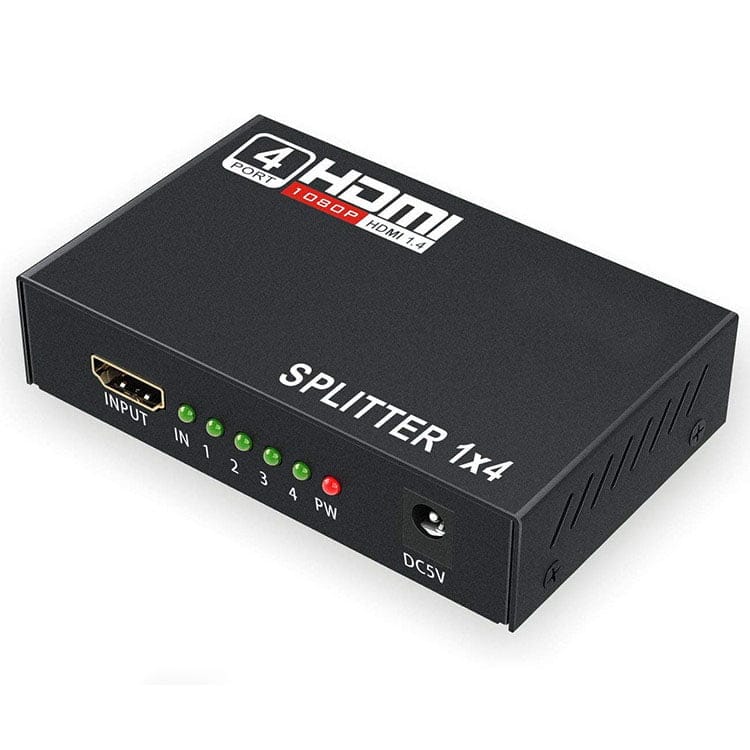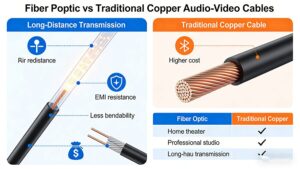In the ever-evolving world of home entertainment, having a top-notch HDMI splitter is crucial for 4K, 8K, and HDR enthusiasts. These devices let you send a single HDMI source signal to multiple displays, which is great for creating a multi-screen setup or sharing content in different rooms. But with so many options on the market, how do you pick the perfect one for your needs? This guide will walk you through all the key factors to consider.
1. Understand Your Requirements
- Number of Outputs: Consider how many displays you want to connect. If it’s just for two TVs in adjacent rooms, a 1×2 splitter will do. But for a more elaborate setup, like in a large home theater with multiple screens or in a commercial setting, you might need a 1×4, 1×8, or even a 1×16 splitter.
- Source Devices: Make sure the splitter is compatible with your source devices, such as gaming consoles (like the PlayStation 5 or Xbox Series X), 4K Blu-ray players, streaming devices (e.g., Apple TV 4K, Roku Ultra), or high-end PCs.
2. Resolution and Refresh Rate Support
- 4K: If you own a 4K TV or monitor, look for a splitter that clearly states it supports 4K resolution. The ideal option is one that supports 4K at 60Hz or even 120Hz for smoother motion, especially important for gaming and high-action content.
- 8K: As 8K TVs are becoming more accessible, future-proofing your setup with an 8K – compatible HDMI splitter is a smart move. These splitters can handle the massive amount of data required to display 8K content.
- HDR: High Dynamic Range (HDR) enhances color, contrast, and brightness, bringing a more immersive viewing experience. Ensure the splitter supports HDR formats like HDR10, HDR10+, Dolby Vision, or HLG.
|
Resolution
|
Recommended Splitter Features
|
|
4K
|
4K@60Hz or 4K@120Hz support, HDR compatibility
|
|
8K
|
8K@60Hz support, high bandwidth to handle the data
|
3. HDMI Version Matters
- HDMI 2.0: This version can support 4K at 60Hz, HDR, and higher audio formats. It’s a great option for most 4K setups.
- HDMI 2.1: The latest and greatest, HDMI 2.1 can handle 8K video, dynamic HDR, and higher frame rates. If you’re planning for an 8K setup or want the best in 4K gaming (e.g., variable refresh rate for smoother gameplay), an HDMI 2.1 splitter is a must.
4. HDCP Compliance
High – Bandwidth Digital Content Protection (HDCP) is essential for streaming services and 4K Blu-ray players. Most 4K and HDR content is protected by HDCP, and if your splitter isn’t compliant, you might get a “no signal” error or the content might not play at all. Look for splitters that support at least HDCP 2.2, and for the latest 8K and advanced gaming content, HDCP 2.3 is ideal.
5. Audio Support
Don’t forget about audio! If you’re using external speakers or a home theater system, check if the HDMI splitter supports the audio formats you need. This could include Dolby Atmos, DTS – HD, or multi – channel surround sound for a more immersive audio experience. Some splitters even have audio extraction features, allowing you to connect audio devices directly.
6. Build Quality and Durability
7. Consider Additional Features
- EDID Management: Extended Display Identification Data (EDID) management can help resolve compatibility issues between devices. It ensures that the splitter and your displays communicate effectively, so you get the best possible picture quality.
- Remote Control: Some high – end splitters come with remote control functionality, which can be very convenient, especially if the splitter is in a hard – to – reach location.
- Power Source: Decide if you prefer a splitter that is powered by USB (more convenient for some setups) or one that comes with an AC adapter (usually better for more power – hungry, high – performance splitters).







